This caveat should be unnecessary, but my friendly counsel advises me to post it and so I will:
"The results obtained here are true and valid for the rifle, scope, shooter and setup in question. No warranties, express, or implied, are given.
Readers are advised to test and confirm that the components and settings work in their respective rifles before committing to any action where accuracy is of prime importance.
Ct Custom Airguns strongly suggests that each shooter tests his/her system and then decide accordingly"
Phew! OK, let's get started:
I've been shooting quite extensively the Barracuda Hunter Extreme pellet by H&N that, from now on, I will abbreviate to BHE.
When I first learned about the accuracy potential of the peculiar pellet at long ranges, I was somewhat dubitative. There was no way such a complicated pellet could be made with enough consistency and accuracy to give the precision I was hearing about.
But, I have learned along my 62+ years that there is no arguing with reality, so you have to test what seems logical, and even what seems somewhat illogical if you trust the person making the statement.
So, between that, and preparing to test the DIANA Stormrider at higher power levels, I decided to buy a tin of BHE pellets and put them through their paces.
Since the initial comments about their accuracy had come from spring-piston shooters from the Eastern side of the Atlantic, I decided to test them at the sub-12 ft-lbs level. Besides, I had been wanting to test the pre-production version of the Barracuda FT (BFT from now on) pellets which are the same weight as the BHE (at least nominally).
Upon initial testing, the BFT pellets proved to be somewhat "inefficient". Meaning that my FT rifle that yielded 11.75 ft-lbs, suddenly yielded a bit more than 10½.
Nothing to worry, a few changes in the setup and the BFT was shooting at 11 ft-lbs.on the dot, but the expected gilt-edged accuracy was not there. At the same time, the JSB Expressess were shooting at 12½ ft-lbs. So, "inefficient" is the right word.
Yes, we all know that lighter pellets will yield more energy in a spring gun and both the BHE and the BFT are 9.57 grainers (nominal weight), but properly short-stroked D54's don't have too much energy "in reserve". If you load the non-lead version of the Barracuda Match (6.6 grs). it will only yield 11.7 ft-lbs., as you can see, the "engine" has been optimized around the 7.9-8.44 grains pellets.
When I tested the BHE, almost on a whim, I got some fantastic groups at 35 yards, and not too much drop from 35 to 55. So, clearly, SOMETHING BIG was going on in here.
We have already related what was the result of shooting the 2018 Maryland State Championship with the BHE, so I will not go there again, clearly the consistency and accuracy of the pellets was there. I failed to notice some change in the gun/scope and missed the top spot for springers, but noneteless, it was a good shoot.
So, let's start with the pellets themselves:
Internal Ballistics
Another picture in the same order:
Running 20 pellets, lubed but otherwise straight from the tin, through the scale, we find out that they are surprisingly uniform in weight:
Measuring the head diameter of the same pellets, we arrive at an average head size of 4.476 mm's with an ES of 0.01 mm's and an SD of 0.003 mm's. Again consistency where it counts.
Doing the same measurements for the BFT, the head size was even more consistent 4.478 +/- 0.002 mm's, but again, the gilt edge accuracy of the BHE is not there. I have some ideas that I will discuss with H&N, hopefully, we can improve the BFT by taking some features from the BHE
From past measurements, I know that my bore is 4.48/4.50 mm's (lands/grooves) mm's and my choke tightens that to 4.47/4.49 mm's
We also need to correct the nominal weight. While 2/10ths of a grain may seem irrelevant, the difference is almost 10 fps on the maximal speed to be within WFTF rules (760 fps to 751 fps). With guns nowadays approaching ES's of 3 and 4 fps in 20 shots strings, it behooves the manufacturer to post and print the correct weight and not some nominal number.
We have already mentioned that the BHE pellets achieved more muzzle energy for the same cocking force than the BFT, so they are more efficient than the BFT, but not quite as efficient as other pellets, within the grand scheme of things, this might be a minor point, or it may not. We will see what this means when we reach the "Terminal Ballistics" section.
External Ballistics
Intermediate ballistics is the very short section of the projectiles' trajectory where they are out of the muzzle, but still affected by the expulsion of excess propellant gases from the barrel.
In firearms, this is a huge concern, the larger the caliber of the shoulder firearm, the more concern it is because the barrels have become shorter and shorter. You may think that a barrel that is 26" long is REALLY long, but expressed in calibers, it is only 84.4 calibers long (we're talking here of 0.308" cal sniper guns). And if you go to the extreme of a Naval gun, a 22.22 yards long barrel of 16" caliber is only 50 calibers long.
Talk about pistols and it becomes even more dramatic.
Compare that to spring-piston airguns that have barrels up to 18" in 0.177" cal., those numbers make the barrel 101.6 calibers long.
Some argue that shorter barrels are more than enough to generate "Full Power" in a spring piston airgun, but those shooters are also usually limited to 12 ft-lbs. at, or near, the sea level. So, for guns designed and built with that limitation, it may be correct to use barrels as short as 10" but, in general purpose guns that can reach up to 17 ft-lbs at 8,000 FASL, then an 18" barrel is correct.
It is funny to think that some PCP's use barrels that are 135.5 calibers long, but that is a necessity of how PCP's work.
Within the realm of short for caliber firearms Intermediate Ballistics is important because the high pressure and velocity of the gases may disrupt the projectile's path and therefore reduce the accuracy, but in airguns, we can and should control this to the point of elimination.
Vortex Diverters/Air Strippers, resonant cavities, and well made reflex LDC's, all contribute to eliminate, almost at the muzzle the problem of "excess gases".
Spring piston airguns, by their very mode of functioning, require only a modest air stripper to control and eliminate the worry. We'll not be bothered here by Intermediate Ballistics.
SO:
Having reviewed those factors that affect the pellet's life INSIDE the barrel (head diameter & weight uniformity, let's look now at what happens OUTSIDE the barrel.
In preparation for the Maryland State Championship, drop data was collected at DIFTA: 866 FASL, at 23°C, and Humidity of around 90%
With a 33 meters (36 yards) zero, as you can see in the picture of the PP-Calc "Results" screen shown below; the drops were: at 41 meters (45 yards) 3/4 mrad, at 50 meters (55 yards) 1 3/4 mrads, and at 10 meters (11 yards) 1½ mrads.
If you have never used PP-Calc, or do not understand how a ballistics solution program can calculate the BC and the rest of the ballistics solution from drop data, then go here.
As the G1 based simultaneous differential equations solved using fuzzy logic showed; shot at 736 +/- 3 fps, from a Diana 54, the pellets exhibit a particularly attractive BC: 0.0242
I have to emphasize here that the much revered BC is just a figment of our imagination. A useful one, but it is just a scale number that applies ONLY to the set of conditions the test was fired under. If you want to read more about the BC, please go here.
I am sure many of you have seen other BC's listed for this pellet in a number of places, most of them poorer, but what I want to be VERY clear about here is that if ANY of the conditions change (mostly MV), the BC WILL CHANGE.
The BC is NOT an intrinsical, inherent, inimical, property of the projectile, it is just a scale factor of how the projectile behaves when fired under certain conditions.
What was heartwarming was the consistency of the results per section of the trajectory. I always expect the BC for the long range to be higher/better than the ones for the intermediate ranges, in this case it was also true, but the fact that from 10 to 41 meters the BC's agreed so well is always a confidence builder.
It means that YOUR DATA is good.
Drift will be proportional to the wind speed once it is calculated for the REAL BC of the pellet/rifle/shooter/scope/location conditions and it will be angularly proportional to the distance, but since we think in distances and not in angles, it is best to let the app do the calculation for you.
What is important, as a shooter, is to learn how to judge accurately the wind speed.
We have a hunting pellet (Hollow Point) that is consistent in weight and dimensions.
That resists wind drift well but does so at somewhat reduced (for US hunters' purposes) power.
In my previous tests of HP pellets, I had found that the minimum impact speed for a HP pellet to expand was around 600-650 fps.
And it was terminal velocity what determined the performance, not energy.
This was true for the Crow Magnum, as well as for the Predator, the Super H Point was even more dramatic in its "need for speed".
Will the BHE pellet reach the target with enough velocity to expand and do the job properly?
If not; Will the design of the pellet compensate a deficiency in terminal velocity?
BUT, as I have said more than once: never argue with reality.
The only way to find out was to make a "Syn-daver" and test the pellets under controlled conditions and using a media I know actually replicates well the composition of muscle, bone, water and organs inside most airgun-worthy critters.
NOTE: If you are bothered by discussions related to hunting live animals, then, PLEASE, do not read the Terminal Ballistics section.
Terminal Ballistics
Take the O'Possum, or the Badger, as examples, they are very tough and you need to know their anatomy to place the shot where there is little to no bone in the trajectory, or the animal will walk away and suffer badly. No ethical hunter wants that, and so I will say it here:
Hunting is a huge responsibility. NO pellet design, NO pellet material, NO pellet caliber can remedy a badly placed shot.
It is YOUR responsibility to know the anatomy of the animal well and it is YOUR responsibility to place the shot accurately and precisely for a quick humane kill. If you cannot assure that the shot will be a good one, DON'T shoot.
Simple as that.
A little bit of history here:
I returned to serious airgunning in 1999, that was after more than 25 years of serious firearm shooting and experimentation. I realized early on that airguns had more in common with cars than with firearms, and so I tried to approach everything with an open mind.
Along my first years of airgunning, I was helped along by true giants in the field, people like "Prof Hoff", Mike Pearson, Tom Anderson, most of them now passed from this realm, helped me understand the intricacies of airgunning. Back then, we were all helped by Edith and Tom Gaylord, that hosted the old "Airgun letter" forum.
Working together with those mentors, we came to a methodology that is repeateble, and very accurate as far as results are concerned to create a "Syn-daver"; that is a synthetic corpse that will replicate the results of the shots and allow us to take decisions of where are the limits of our equipment.
Originally, Mike Pearson liked to test the expansion of pellets into Ivory Soap bars. Why? it was cheap, consistent, and easy; and used test material was always useful around the house. But serious tests revealed that the soap was too hard and promoted expansion in pellets that would not expand in softer materials / live tissue.
Gelatin was also tried. Even when concocted to very precise specifications (Prof Hoff was a professional chemist), it would give results that would change with the weather.
Tom Anderson used to use phone books, they were plentiful and cheap (if you went to the phone offices, they had bins to recycle old ones, and it wouldn't bother any if you re-used them before recycling them (just take the lead out before taking them back to the recycling bin, LOL!) But phone books were too hard and shredded the pellets more than promoting a smooth, tissue-imitating, expansion.
So, we came to the idea of using waterlogged phone books. Soaking them overnight, making sure they had plenty of water to "drink" and then shooting at them.
But it was not perfect. The book structure made the media differ widely in the performance given the shot placement.
Next idea was to create something different along the lines of the waterlogged phone books and we thought of using newsprint. Now, newsprint is a special type of paper. It has good tensile strength and a good "Mullen" (resistance to perforation). It is easy to get, and you do not really care if it is wood derived or sugarcane derived, it has to meet the criteria laid down by the rotary printing presses that use it (multi-million dollar machines). So it has good quality control.
Making "blocks" of squares of 8"x 8" putting the blocks in ZipLoc's and then soaking them overnight resulted in an excellent test media.
The fibers did abrade the pellet as would muscle fibers, and the density of water-soaked paper pulp pretty much approached what is found in live tissue.
Heavy duty Zip-Locs also imitated rather well the consistency of skin.
It had one added advantage: you could insert bones to see what would happen if the pellet hit a bone (whether intentionally or not).
It had ONE disadvantage: it did not replicate the effect of shooting through heavy feathers, but knowing that, you simply had to take your shot from an advantageous position when doing the real thing.
Nowadays, newsprint is used mostly to package things. As newspapers have reduced their circulation, you can still get newsprint as packaging paper or children's drawing rolls.
The tests you will see below were made using this methodology. I will not post pictures of the bones used but will tell you that they were domestic chicken. Neck, shoulder, and wing bones.
The whole was packaged into a large, heavy duty Zip Loc and the location of the bones was marked.
Also, incidence angles were used to ensure that the results were as true to life as possible.
Shots were taken from 50 meters (55 yards).
Looking at them individually:
Since pellets cannot kill through hydrostatic shock (and it is debatable that most CF rounds do), but kill through tissue destruction, it is clear that if you would not hesitate to shoot a turkey in the neck with a 0.22" cal. domed, solid, pellet (where legal, of course), you might consider this pellet.
Of course, shots need to be kept to the range where you can place the shot within ¼" of POA. Whatever that distance is, is up to you to test yourself and find out; and then limit yourself to that range.
The terminal velocity curve tells us that shot at this slow speed, you should expect expansion at 34-35 yards. But reality has proven different. In this sense, it is the design and the hardness of the pellet what makes it a good performer. Could pellets be made of softer lead to have even better expansion performance?
According to H&N, no. The hardness of the pellet is mostly determined by the mechanical requirements imposed on the pellet as it is extracted from the dies.
What would happen at higher power levels? It needs to be tested. It could go both ways.
Part of the quandary is finding out WHY the design works so well at such slow MV's.
And doing tests at higher powers is definitely within our capabilities and objectives, but it will have to wait.
As I said above, there are ideas that need further discussing with H&N.
Conclusion
Then a friend from RWS (before it was bought by UMAREX), offered to send me some Brenneke "TUG" bullets from the East side of the Atlantic. After all the formalities of the case (and there were a LOT), when they arrived and I tested them, I was very pleasantly surprised.
"TUG" stands for Torpedo Universal Geschoss (or Torpedo Universal Bullet), it is a bullet that has dual core, and a complex profile of different diameters and bands that ensure not only its performance on the internal ballistics (pressure and heat in barrel), and on the external (trajectory, accuracy, and hole-cutting) ballistics side, but also on the terminal ballistics side.
After sectioning a bullet and testing somewhat extensively, I was able to replicate some of its characteristics by using a lengthy and complicated process that involved casting two cores (different hardness), then using three different punches to swage the cores, weld one of them to the jacket, then using a rebated boat-tail base forming die and then using a dual diameter nose forming die to finish the bullet with a point forming die. It took about 10 hours to make 50 bullets.
But they shot like a dream, and their performance in game was simply outstanding.
I owe much of my understanding of internal, external and terminal ballistics to the inventions of Herr Wilhelm Brenneke.
Back to airguns: in essence, H&N has made a hollow-point pellet, that behaves, for all intents and purposes, like the domed ones.
It flies like a 0.177" and hits like a 0.22"
It is accurate, consistent, and has a good BC.
¿What else can you ask for?
If you have a chance, test this pellet in YOUR rifle, make sure you start at low MV's (I would recommend 730-740 fps), and then up the game till you find what is the limit of the pellet in YOUR barrel.
¿Am I going to do that?
Not for the time being. I need a pellet to shoot FT matches and while 10 fps more might be important., when travelling 500 to 10,000 miles to Matches, it is more important to still be "legal" when you get there; and ½ ft-lb is a somewhat narrow "protection buffer". I feel comfortable that I will not exceed the "legal ME" but I don't want to push my luck.
Hope you have enjoyed the read of such a long article, but I really do think that this pellet is a door opener and, hopefully, we can get some ideas past the threshold of that door.
Keep well and shoot straight!
HM








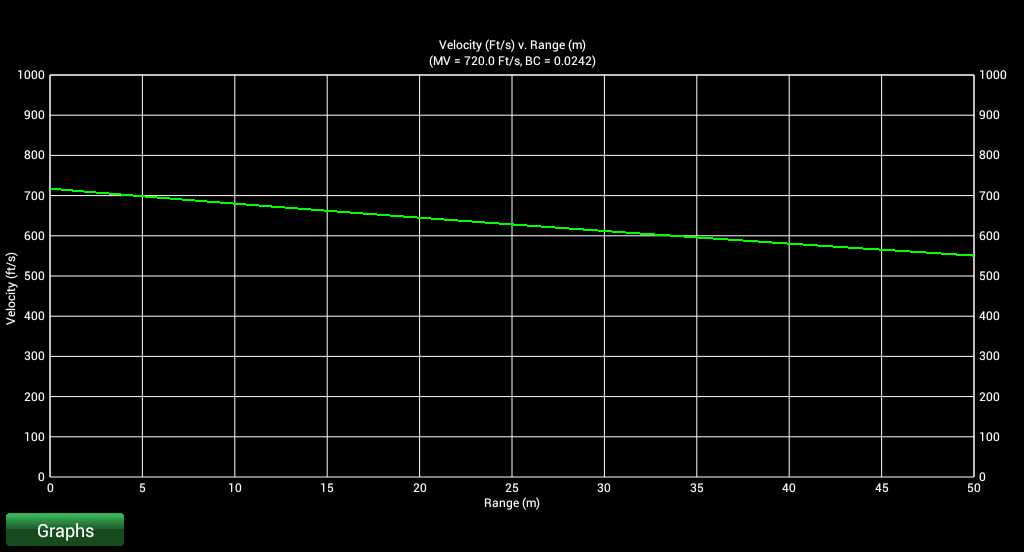





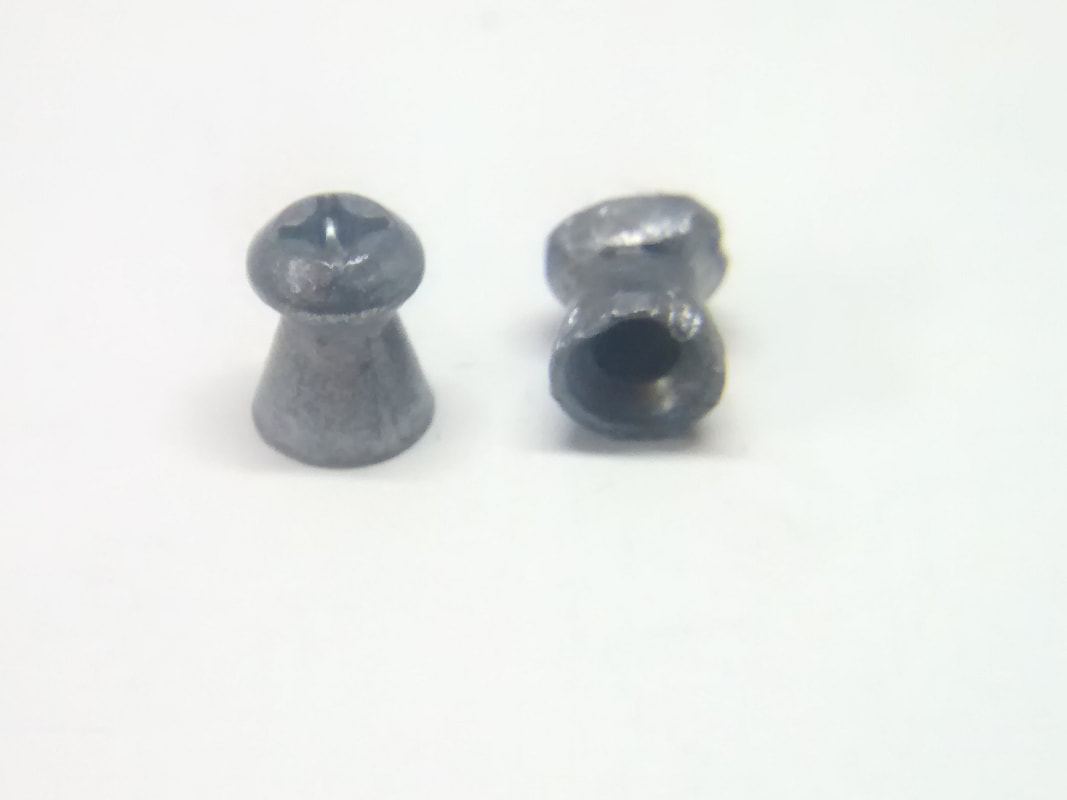









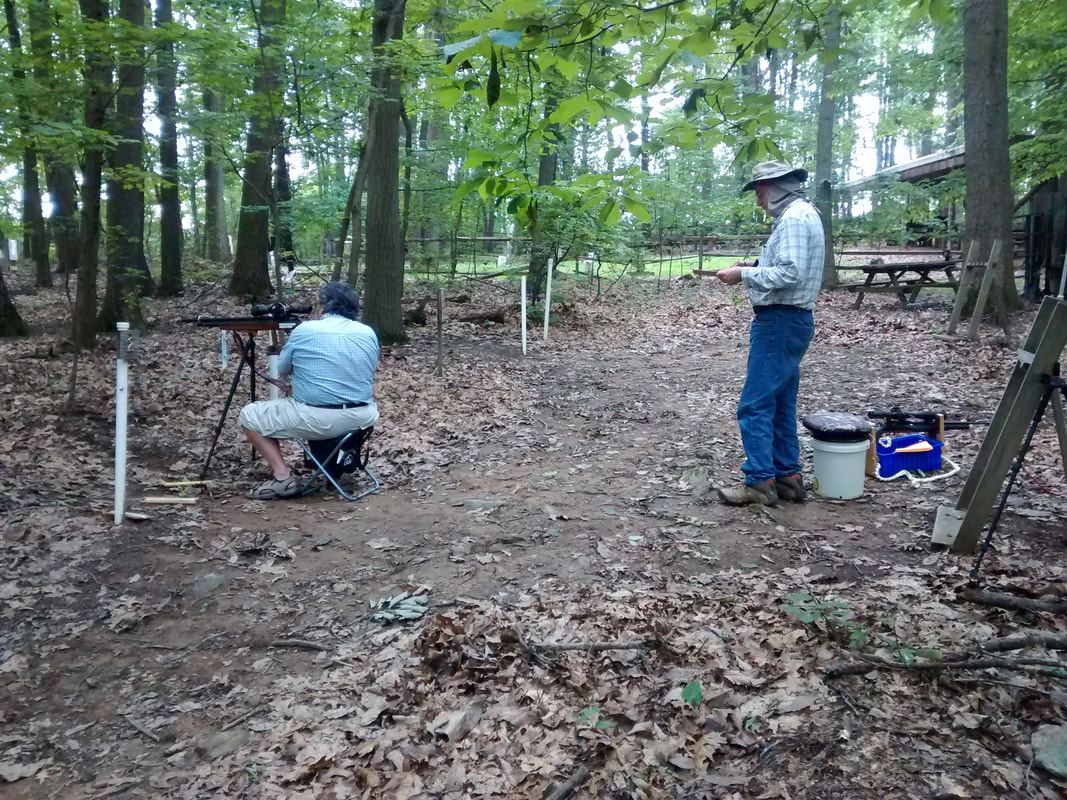

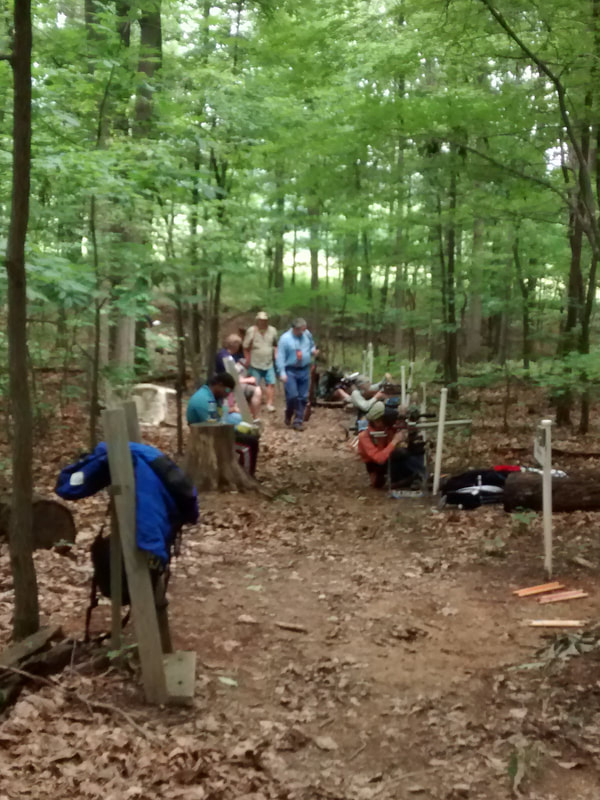
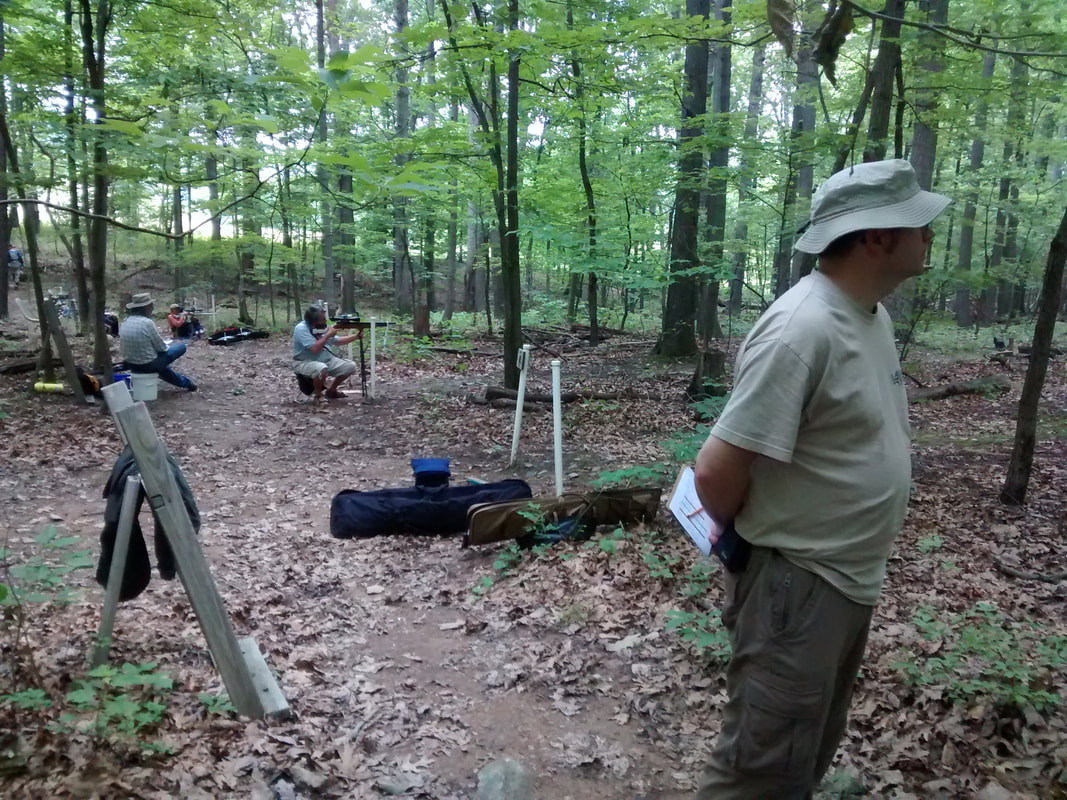
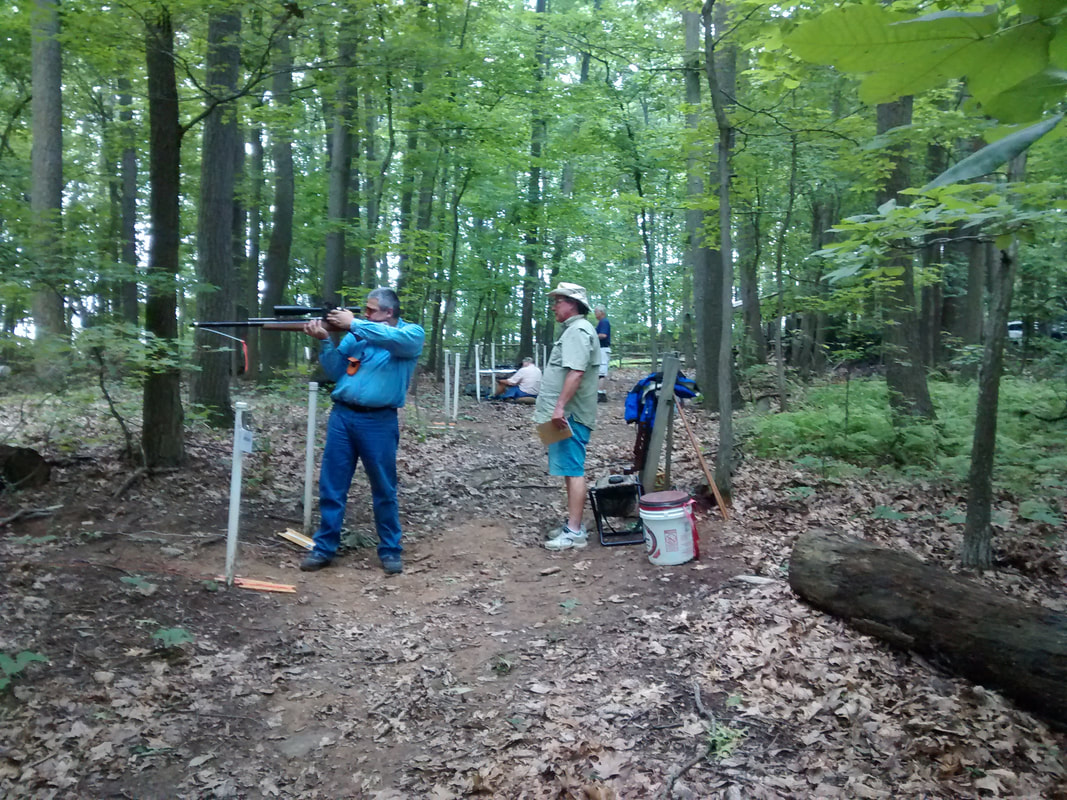

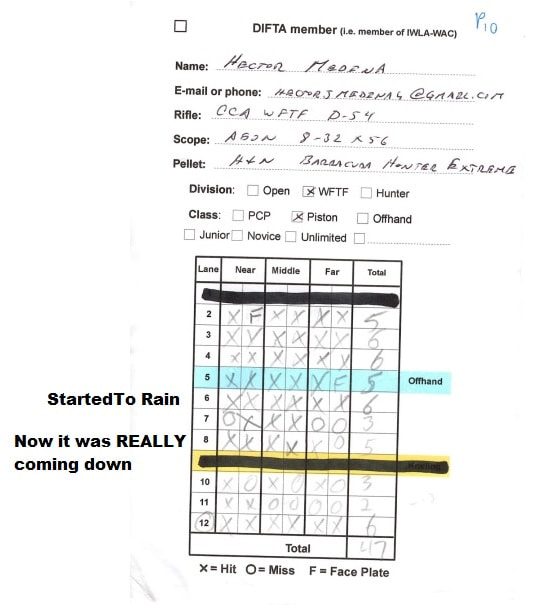

 RSS Feed
RSS Feed